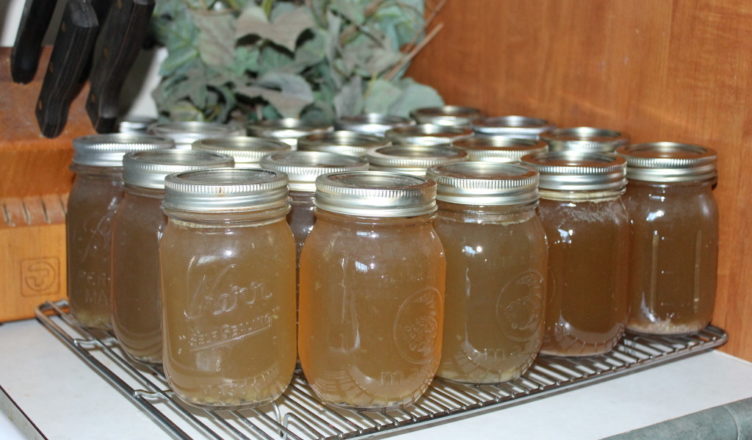Homemade bone broth is packed full of vitamins, minerals, and nutrients which are excellent for boosting immune function and keeping your body strong and healthy.
You can make bone broth from practically any animal bones, but the best are chicken, beef, and fish. Chicken feet make an excellent addition to bone broths and stocks, which are naturally rich with gelatin and are great for your body.
 According to the book Nourishing Traditions by Sally Fallon,
According to the book Nourishing Traditions by Sally Fallon,
“Gelatin acts first and foremost as an aid to digestion and has been used successfully in the treatment of many intestinal disorders, including hyperacidity, colitis and Crohn’s disease. Although gelatin is by no means a complete protein… it acts as a protein sparer, allowing the body to more fully utilize the complete proteins that are taken in. Thus, gelatin-rich broths are a must for those who cannot afford large amounts of meat in their diets. Gelatin also seems to be of use in the treatment of many chronic disorders, including anemia and other diseases of the blood, diabetes, muscular dystrophy and even cancer.”
I like to keep jars of homemade bone broth to be used as a soup base, but also for sipping when one of us gets sick. In a situation where protein sources are scarce, bone broth would be an important addition to your diet.
There are many different recipes for a good bone broth to choose from online or in cookbooks. They can all be canned using the method I’ll share in a minute. It’s important that you use quality bones for the most nutritious broth or stock. Organic, grass-fed meat and bones will yield the best product.
After you’ve made your broth and strained it through a cheesecloth or jelly bag, you’ll need to refrigerate it overnight to allow the fat to rise and harden so that it can be easily removed before canning. It’s important to remove as much fat as possible from the broth before canning because it can actually creep up the sides of the canning jar and ruin a good seal.
Once you’ve strained the bone broth and removed the fat, you’re ready for the next step: canning it.
The only equipment you absolutely need besides jars and lids is a pressure canner. This is an absolute must. Pressure canning is the only safe way to can low acid foods, and should never be substituted with water bath canning. A lid lifter or tongs, and a jar lifter are also helpful to reduce the chances of getting burned when dealing with hot lids and jars.
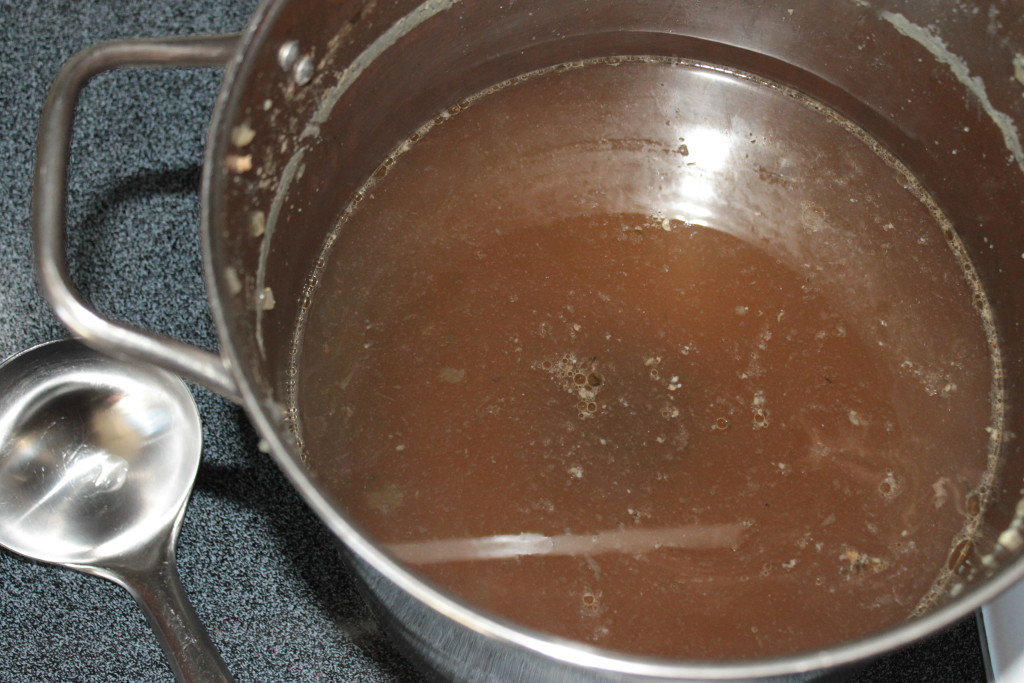
Bring broth (or stock) to a gentle boil. Meanwhile, have clean lids and jars simmering in hot water to sterilize before use. Canning jars can also be run through the dishwasher to keep clean and hot. It’s important to keep the jars warmed before filling them with hot liquid, so they don’t crack.
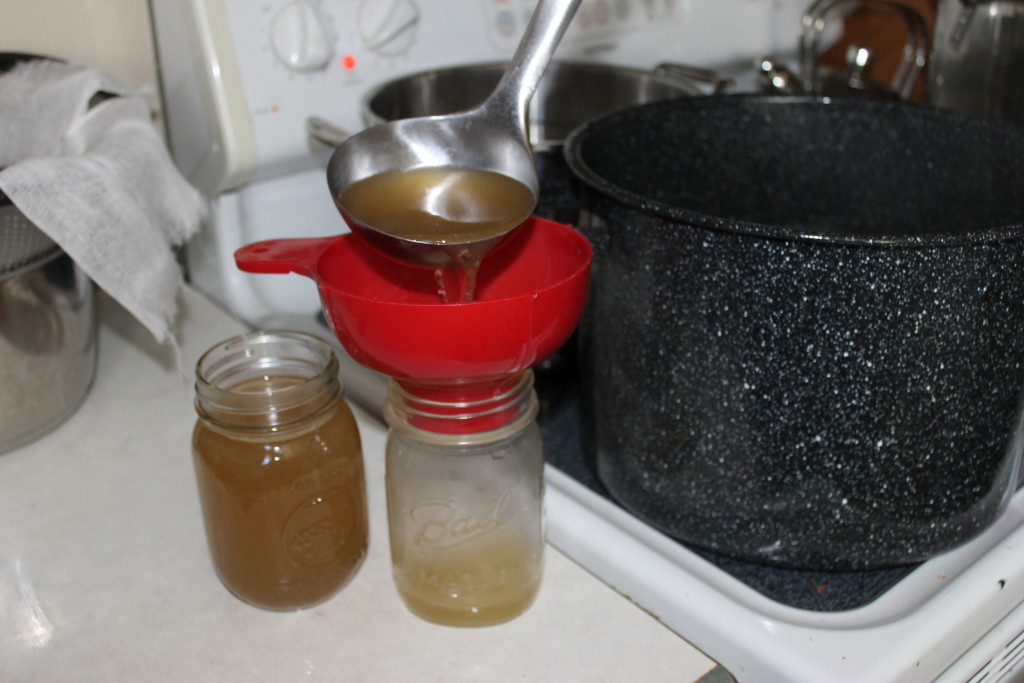 Ladle the hot broth/stock into jars, leaving 1″ headspace.
Ladle the hot broth/stock into jars, leaving 1″ headspace.
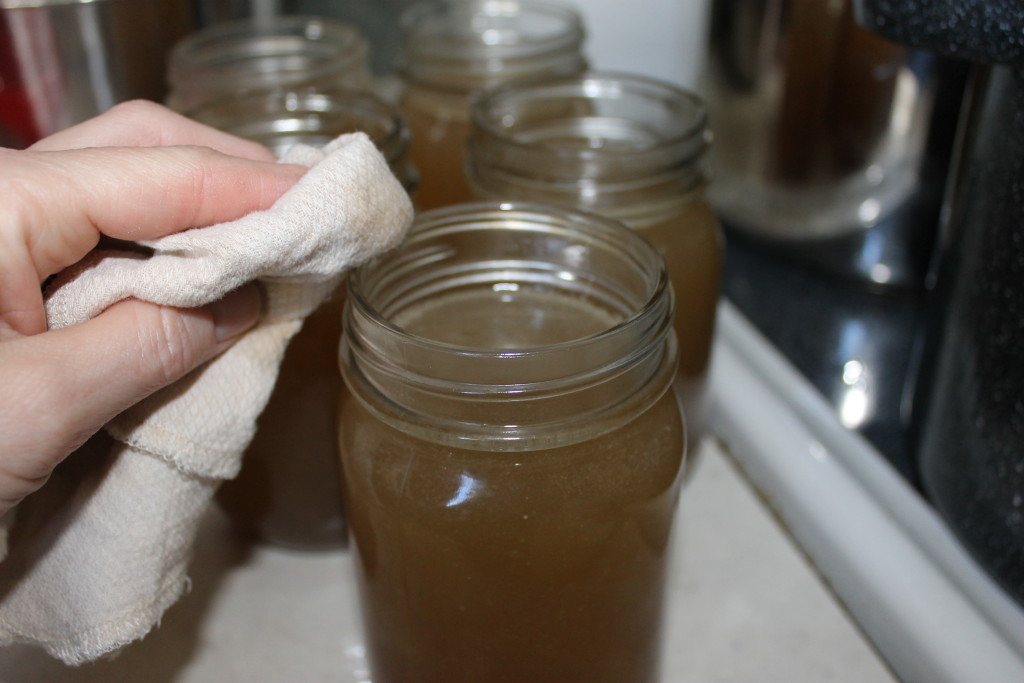 Wipe the rims of the jars with a little white vinegar to cut the grease and remove any drops of liquid which might prevent the lid from sealing.
Wipe the rims of the jars with a little white vinegar to cut the grease and remove any drops of liquid which might prevent the lid from sealing.
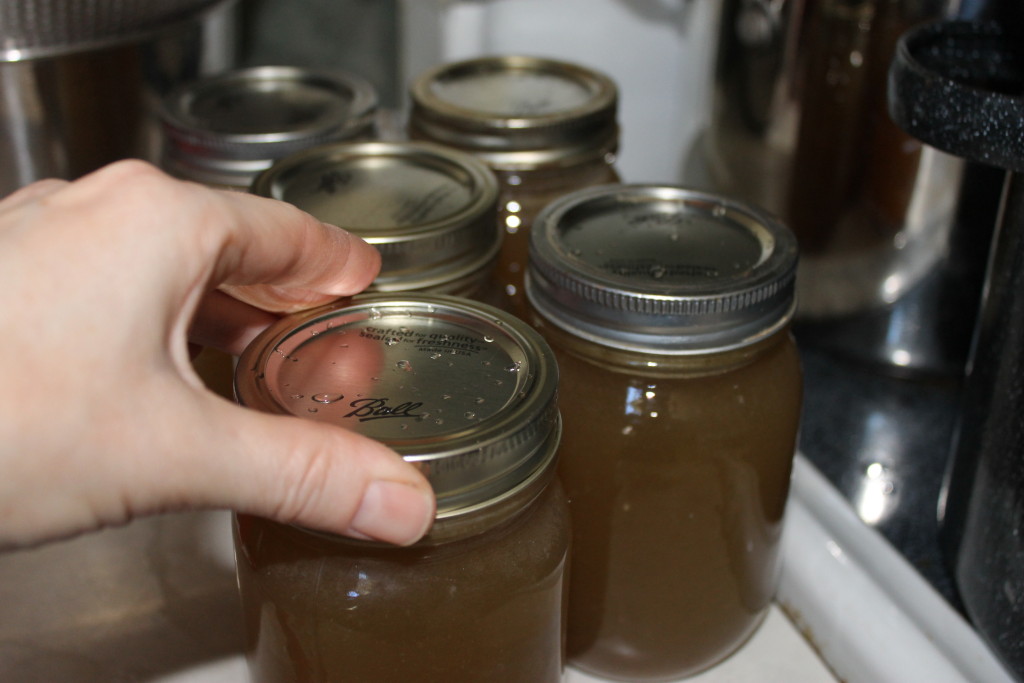
Secure the lids, screwing them down finger-tight.
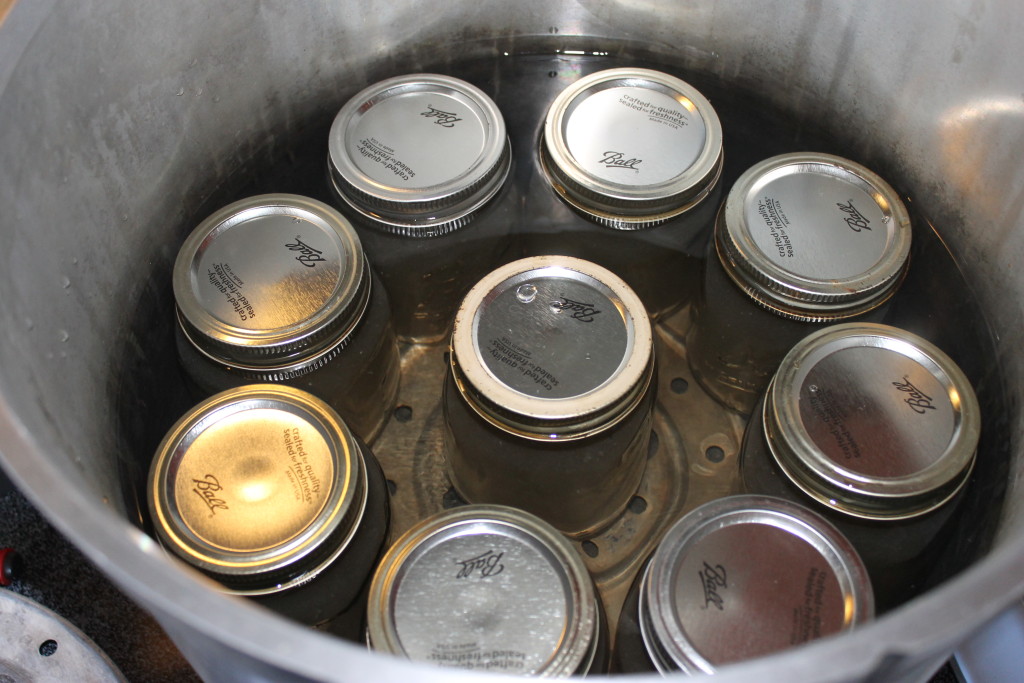
Place the filled jars in a pressure canner according to the manufacturer’s instructions. All American Pressure Canners require 2″ of water to be poured into the canner before adding jars. Make sure to place a rack in the bottom of the canner before adding the jars, to keep them from resting directly on the heat source. (Your canner should come with a rack.)
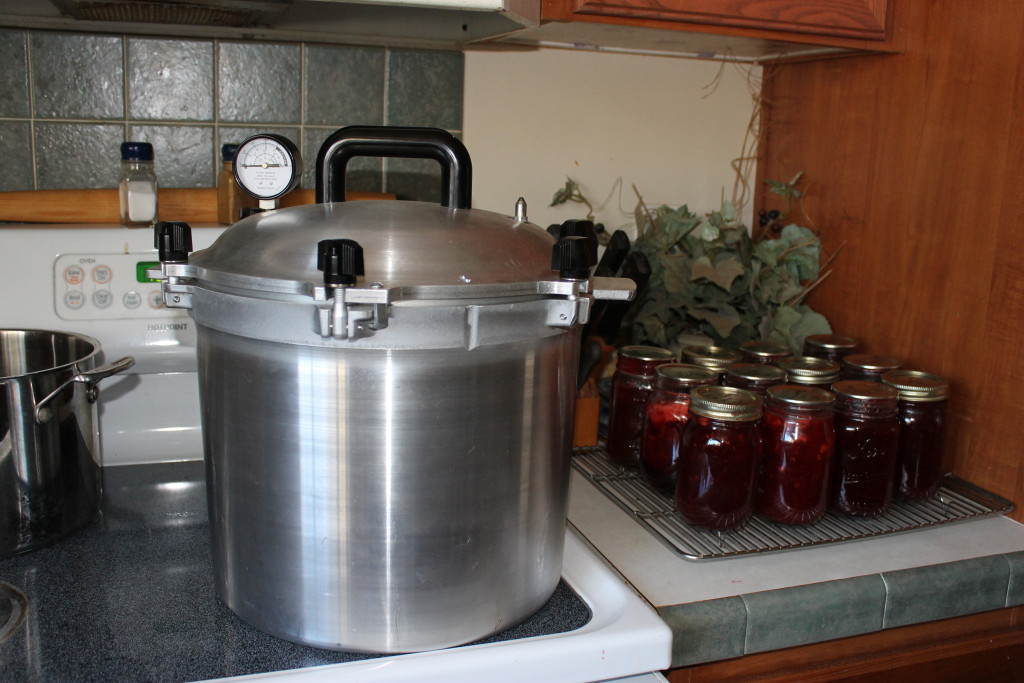
Bone stocks or broths needs to be pressure canned at 10 lbs of pressure; 20 minutes for pints, 25 minutes for quarts. Again, follow your manufacturer’s instructions for using your canner. Also, adjust your pressure accordingly if you live at high altitudes.
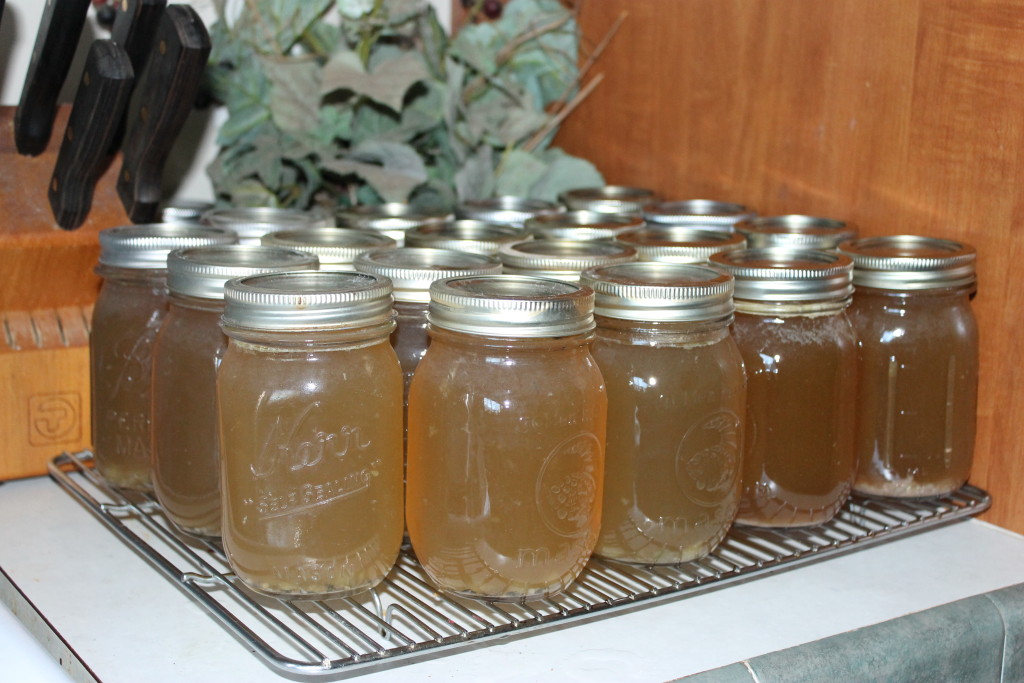
Once the canning process has finished, allow the canner to cool where it is and the pressure to drop back down to zero before removing the canner’s lid. Always tip the lid away from you as you remove it so the escaping steam doesn’t burn your face or hands.
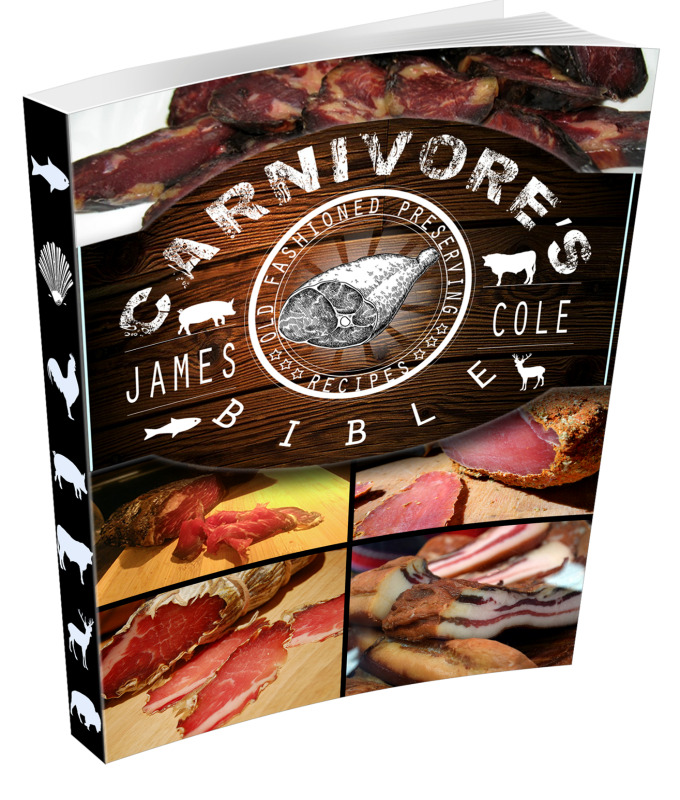 Place the hot jars on a cooling rack for 24 hours before testing the seals. Always test the seals to make sure the lids are tight before placing the jars on your shelf. If a lid doesn’t seal, put that jar in the fridge to be used within a week.
Place the hot jars on a cooling rack for 24 hours before testing the seals. Always test the seals to make sure the lids are tight before placing the jars on your shelf. If a lid doesn’t seal, put that jar in the fridge to be used within a week.
Home canned foods will stay good for many years, but should be consumed within a year for the best flavor and quality.
Canning can be done without electricity, and is a great way to preserve foods to be stored long term without the need for refrigeration. If you haven’t added canning equipment to your preps yet, do it. There’s almost no limit to what you can have on your shelves when you have a pressure canner, jars, and reusable lids.
by Kendra Lynne
Kendra Lynne: I’m a homeschooling, homesteading mama of four, doing everything I can to help my family live more self-sufficiently on our one country acre here in the Bible Belt South. Although my husband and I grew up as city kids, in 2008 we started feeling the urge to begin pulling ourselves out of the “system” and learning how to provide for our most basic needs. Boy, were we in for a learning curve!! It’s been a journey, but we’ve come a long way. I’ve been sharing about it all on my website, New Life on a Homestead, and am excited to bring the preparedness aspect of this lifestyle to all of you here as well!

